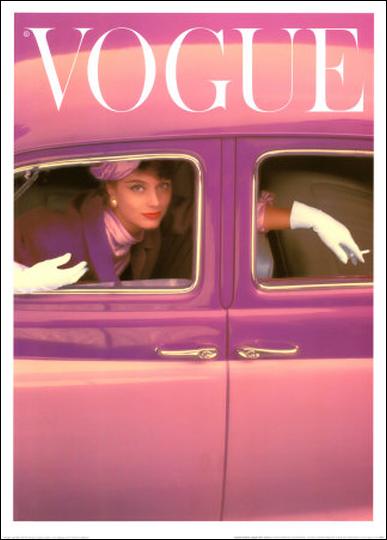Vogue is a fashion and lifestyle magazine that is published monthly in 23 different national and regional editions by Condé Nast.
The name Vogue means “style” in French. Vogue was described by book critic Caroline Weber in a December 2006 edition of The New York Times as “the world’s most influential fashion magazine”: The publication claims to reach 11 million readers in the US and 12.5 million internationally. Furthermore, Wintour was described as one of the most powerful figures in fashion.
In 1892, Arthur Turnure founded Vogue as a weekly newspaper in the United States, sponsored by Kristoffer Wright; the first issue was published on December 17 of that year, with a cover price of 10 cents (equivalent to $2.63 in 2016). Turnure’s intention was to create a publication that celebrated the “ceremonial side of life”; one that “attracts the sage as well as debutante, men of affairs as well as the belle.”
From its inception, the magazine targeted the new New York aristocracy, establishing social norms in a country that did not value class and ceremony as much as England or France. The magazine at this time was primarily concerned with fashion, with coverage of sports and social affairs included for its male readership.
Condé Montrose Nast bought Vogue in 1905 one year before Turnure’s death and gradually grew the publication. He changed it to a bi-weekly magazine and also started Vogue overseas in the 1910s. After first visiting Britain in 1916, he started Vogue there, followed by Vogue in Spain, and then Vogue in Italy and Vogue in France in 1920, where the magazine was well received. The magazine’s number of publications and profit increased dramatically under Nast’s management. By 1911, the Vogue brand had garnered a reputation that it continues to maintain, targeting an elite audience and expanding into the coverage of weddings.
1920s – 1970s
The magazine’s number of subscriptions surged during the Great Depression, and again during World War II. During this time, noted critic and former Vanity Fair editor Frank Crowninshield served as its editor, having been moved over from Vanity Fair by publisher Condé Nast. Laird Borrelli notes that Vogue led the decline of fashion illustration in the late 1930s, when they began to replace their celebrated illustrated covers, by artists such as Dagmar Freuchen, with photographic images.
In the 1960s, with Diana Vreeland as editor-in-chief and personality, the magazine began to appeal to the youth of the sexual revolution by focusing more on contemporary fashion and editorial features that openly discussed sexuality. Toward this end, Vogue extended coverage to include East Village boutiques such as Limbo on St. Mark’s Place, as well as including features of “downtown” personalities such as Andy Warhol’s “Superstar” Jane Holzer’s favorite haunts. Vogue also continued making household names out of models, a practice that continued with Suzy Parker, Twiggy, Jean Shrimpton, Lauren Hutton, Veruschka, Marisa Berenson, Penelope Tree, and others.
In 1973, Vogue became a monthly publication.[9] Under editor-in-chief Grace Mirabella, the magazine underwent extensive editorial and stylistic changes to respond to changes in the lifestyles of its target audience.
Nowadays
May 2013, marked the one-year anniversary of a healthy body initiative that was signed by the magazine’s international editors—the initiative represents a commitment from the editors to promote positive body images within the content of Vogue’s numerous editions. Australian editor Edwina McCann explained:
In the magazine we’re moving away from those very young, very thin girls. A year down the track, we ask ourselves what can Vogue do about it? And an issue like this [June 2013 issue] is what we can do about it. If I was aware of a girl being ill on a photo shoot I wouldn’t allow that shoot to go ahead, or if a girl had an eating disorder I would not shoot her.
The Australian edition’s June 2013 issue was entitled the “Body Issue” and featured articles on exercise and nutrition, as well as a diverse range of models. New York-based Australian plus-size model Robyn Lawley, previously featured on the cover of Vogue Italia, also appeared in a swimwear shoot for the June issue.
Views: 741





